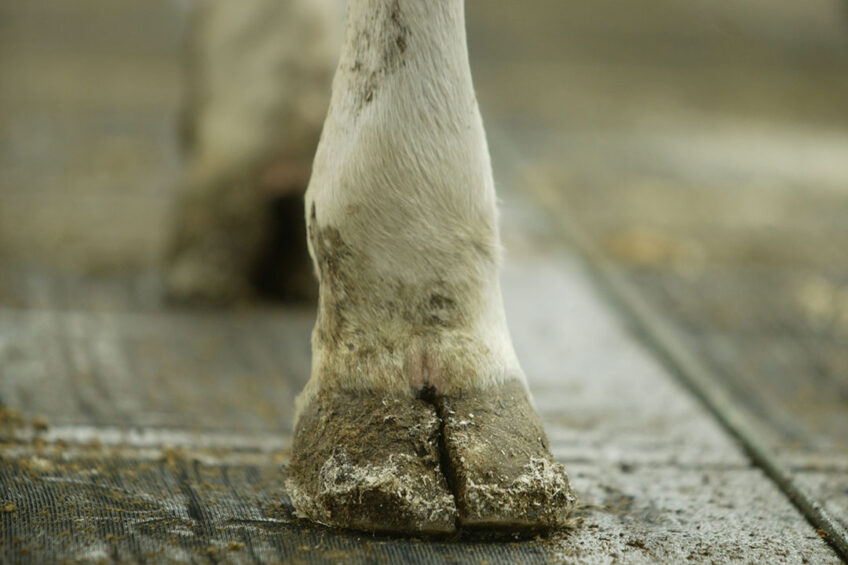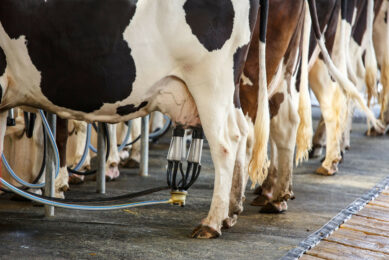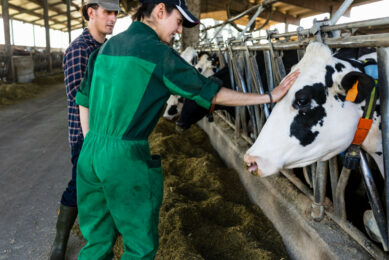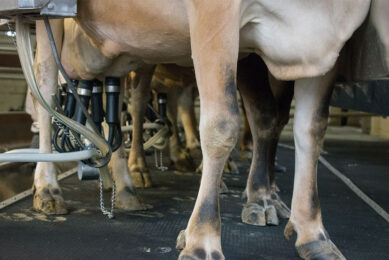Tackling lameness: What does the evidence say?

Whilst the primary goal is preventing lameness in the first instance, when cows do go lame the evidence is very clear that the best outcome is achieved through treating promptly and treating effectively.
Cows naturally hide early cases of lameness due to their stoical nature, therefore identifying changes in behaviour at the earliest opportunity is crucial.
However, even when identified at an early stage, the outcome can still vary greatly depending on how the cow is treated. Therefore, it is the combination of early identification and effective treatment that is important. One without the other is unlikely to yield optimal results.
Treat promptly
The longer a cow is lame before treatment, the longer it will take for her to recover. Therefore, treating lame cows quickly and effectively is a key component of any lameness reduction program. Research by the University of Bristol in 2014 demonstrated that fortnightly scoring followed by prompt treatment of new cases of lameness was proven to reduce lameness at herd level. So, if we’ve known this for so long, why do we still have such high levels of lameness around the world?

Whilst we know that fortnightly mobility scoring is effective, implementing this can be challenging. Where time is seen as a barrier, using independent mobility scorers can be beneficial, so that it does not fall by the wayside during busy times. It is also particularly useful if treatment lists can be generated automatically and therefore cows needing treatment identified easily. Liaising directly with the in-house or external foot trimmer is also essential to ensure that the correct cows are being presented, so that feedback on the findings can then be used to monitor progress.
A common misconception is that scoring fortnightly is too frequent and that 4-6 weekly scoring may be sufficient. However, the same beneficial results are not seen with longer inter-scoring intervals. Research published by the University of Nottingham in 2016 showed when cows have been lame for six weeks or more prior to treatment, overall cure rates were considerably lower than if they had been lame for two weeks or less. So it really is a case of the earlier the better when it comes to treatment.
Treat effectively
Despite lameness being a widespread problem, there have been very few studies to date which have looked at the most effective way to treat lameness. However, that changed in 2015 with the publication of the first randomised control trial on treatment by University of Nottingham. The study investigated the differences between four different treatments for claw horn disruption lesions i.e. sole bruising, white line disease and sole ulcer.
Cows were enrolled if they were lame at the fortnightly mobility score, having been sound for at least the two previous scores i.e. a minimum period of 4 weeks. Enrolled cows were randomly subjected to one of four treatment groups: 1. Therapeutic trim only; 2. Therapeutic trim plus application of block; 3. Therapeutic trim plus pain relief (ketoprofen for 3 days); 4. Therapeutic trim plus block plus 3 days pain relief. Cows were re-examined at 35 days post-treatment.

Cows in treatment Group 4, which received combination treatment with a therapeutic trim, block and pain relief, had a significantly higher cure rates in comparison to therapeutic trim only when the outcome assessed was a sound cow (56.1% vs 24.4%;) Therefore, when treating early cases of lameness this is considered the best practice approach.
Another outcome of both the University of Bristol and University of Nottingham studies was that the sooner a cow was treated, the less likely she was to require repeated treatments. Reducing the number of times a cow needs to be seen for lameness, increases the time available to undertake preventive trimming so there are many benefits to early detection.
Whilst there is still much to discover behind the exact mechanisms which lead to lesions and then lameness, there is now sound evidence to steer our treatment decisions. Research over the last decade continually indicates that early detection and effective treatment can lead to reduced levels of lameness in a herd, the challenge now is to ensure that this becomes routine practice on every farm looking to drive its lameness down.










